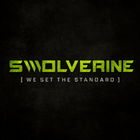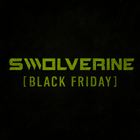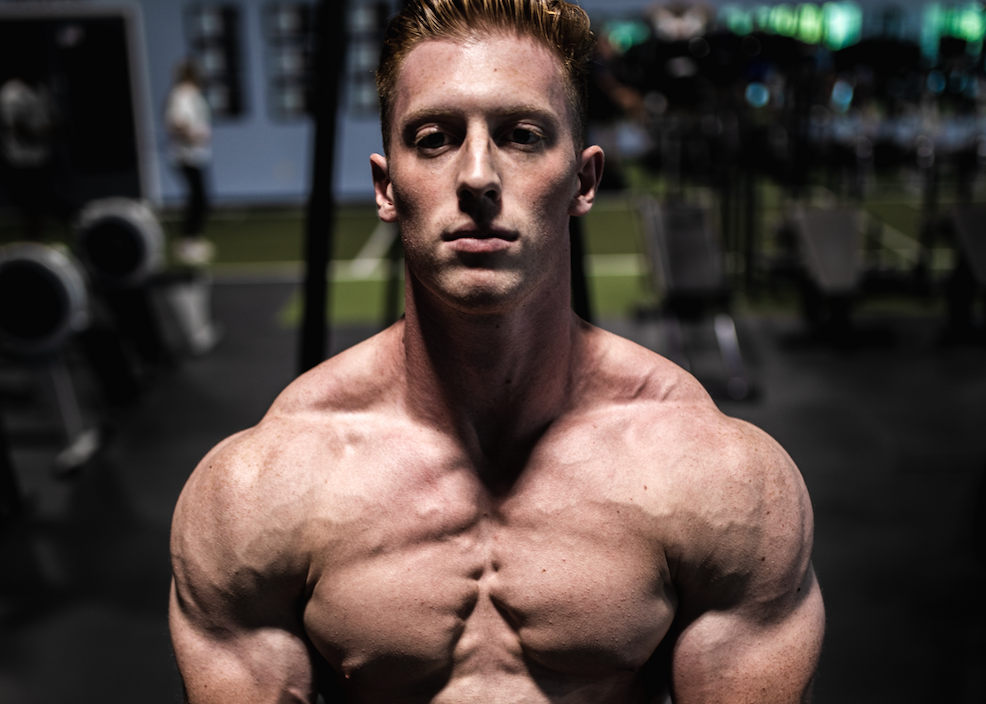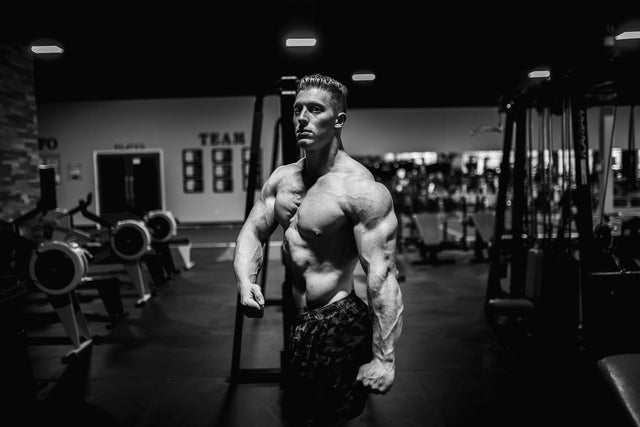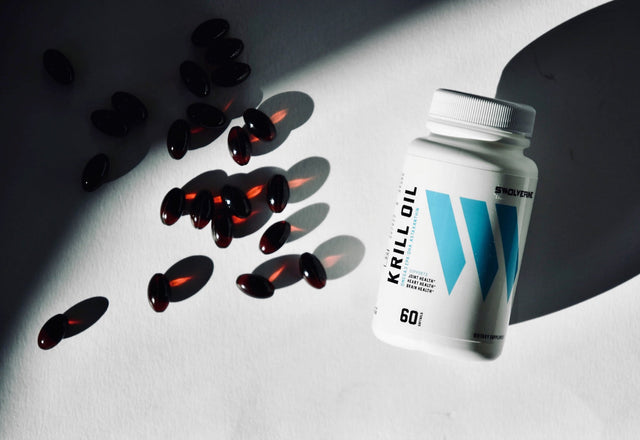After cycling through a rigorous training regimen and potentially using performance-enhancing substances, the importance of post cycle therapy (PCT) cannot be overstated. This essential phase is your roadmap to reclaiming hard-earned gains and restoring hormonal balance, often disrupted during intense cycles. Whether you’re a seasoned athlete or a newcomer to bodybuilding, understanding PCT is critical for maximizing results and maintaining your health.
In this ultimate guide, we’ll dive into the intricacies of post cycle therapy, exploring its vital role in hormonal recovery, strategies for optimal execution, and tips on how to sustain your progress long after the cycle has ended.
Say goodbye to the uncertainty and hello to a revitalized you, ready to conquer new fitness goals with confidence. Prepare to unlock the secrets of PCT and pave the way for a seamless transition back to peak performance.
Understanding Post Cycle Therapy (PCT): What You Need to Know
Post Cycle Therapy (PCT) is a critical phase that follows a cycle of anabolic steroids or other performance-enhancing drugs (PEDs). It’s a structured regimen designed to help the body recover its natural hormone production, which is often suppressed during a steroid cycle.
Essentially, PCT aims to mitigate the side effects of steroid use, restore hormonal equilibrium, and preserve the muscle gains achieved during the cycle. Without an effective PCT protocol, users risk experiencing long-term hormonal imbalance, potential health issues, and significant muscle loss.
What Is the Purpose of PCT?
The primary goal of PCT is to restart endogenous testosterone production. Anabolic steroids artificially elevate testosterone levels, which suppresses the body’s natural production through negative feedback on the hypothalamic-pituitary-gonadal (HPG) axis.
When a cycle ends, there's often a sudden and significant drop in testosterone. This can lead to:
-
Fatigue
-
Mood swings or depression
-
Low libido
-
Loss of muscle mass
PCT bridges this hormonal gap, allowing testosterone levels to return to baseline more quickly and helping prevent the adverse effects of hypogonadism (Basaria & Dobs, 2001).
Preserving Muscle Gains After a Cycle
PCT is not just about hormonal balance; it’s also about protecting your results. Without it, the body may enter a catabolic state, where muscle tissue is broken down due to low testosterone and increased cortisol levels (Hickson et al., 1980).
By initiating a well-timed PCT protocol, athletes can:
-
Maintain strength and muscle size
-
Reduce cortisol-related muscle breakdown
-
Support faster recovery and training progression
This is particularly vital for competitive bodybuilders or strength athletes who need to keep performance high between cycles.
The Importance of PCT in Bodybuilding
A Bodybuilder’s Recovery Essential
For bodybuilders, PCT isn’t optional—it’s essential. The pursuit of a stronger, leaner physique often includes periods of enhanced performance through PED use. However, these come with the cost of hormonal suppression.
PCT acts as a safety mechanism, allowing the body to:
-
Rebalance testosterone and estrogen
-
Prevent estrogen-dominant side effects (like gynecomastia)
-
Resume normal hormone production
This recovery period is especially important after long or high-dose cycles, where hormonal disruption is more pronounced.
The Dangers of Skipping PCT
Failing to follow a proper PCT plan can lead to a host of short- and long-term health consequences:
-
Mood disorders: Depression and anxiety are common when testosterone drops suddenly.
-
Infertility: Chronic suppression of the HPG axis may lead to testicular atrophy and impaired fertility (Jarow & Zirkin, 2005).
-
Gynecomastia: Without anti-estrogen therapy, high estrogen can lead to male breast tissue development.
-
Liver and cardiovascular strain: Poor recovery increases stress on organ systems already taxed by PED use (Hartgens & Kuipers, 2004).
PCT is a proactive investment in long-term health, not just a short-term muscle preservation strategy.
Common Hormonal Imbalances After Steroid Cycles
1. Testosterone Suppression and Hypogonadism
One of the most common effects after a cycle is hypogonadism, a condition in which the body fails to produce sufficient testosterone. This happens because anabolic steroids suppress the brain’s signal to produce testosterone via the HPG axis.
Symptoms of post-cycle hypogonadism can include:
-
Lethargy
-
Decreased libido
-
Poor concentration
-
Muscle wasting
According to research by Bhasin et al. (2001), recovery of testosterone levels can take several weeks to months depending on the compounds used and cycle length.
2. Elevated Estrogen Levels
Certain anabolic steroids can aromatize, converting into estrogen via the aromatase enzyme. This estrogen dominance can result in:
-
Water retention
-
Fat gain
-
Gynecomastia
Drugs such as aromatase inhibitors (AIs) (e.g., Arimidex) or Selective Estrogen Receptor Modulators (SERMs) (e.g., Nolvadex or Clomid) are typically used during PCT to manage these estrogen-related side effects (Santen et al., 1990).
3. Cortisol Dominance and Muscle Breakdown
When anabolic steroid use stops abruptly, the drop in testosterone often causes a relative rise in cortisol, the body’s primary stress hormone. This creates a catabolic environment, making it difficult to retain muscle tissue.
PCT helps buffer this cortisol increase by reintroducing hormonal support that promotes anabolism, especially as testosterone levels normalize. Supplements like Ashwagandha and phosphatidylserine may also help modulate cortisol levels during recovery (Chandrasekhar et al., 2012).
PCT is one of the most critical, yet often overlooked, aspects of performance enhancement. Whether you’re a seasoned bodybuilder or exploring your first cycle, investing time and effort into PCT ensures that you don’t just make gains—but keep them.
By using evidence-based strategies, recognizing the body’s natural hormonal rhythms, and incorporating the right medications or supplements, athletes can recover safely and maintain long-term health and progress.
Key Components of an Effective Post Cycle Therapy (PCT) Protocol
SERMs: The Foundation of Hormonal Recovery
A successful PCT protocol typically includes Selective Estrogen Receptor Modulators (SERMs) like Clomid (Clomiphene Citrate) and Nolvadex (Tamoxifen Citrate). These medications play a crucial role in reigniting the body’s natural testosterone production.
SERMs function by stimulating the pituitary gland to release more luteinizing hormone (LH) and follicle-stimulating hormone (FSH), which in turn signal the testes to produce testosterone. Additionally, SERMs help block estrogen receptors in tissues such as the hypothalamus and breast tissue, reducing the risk of estrogen-related side effects like gynecomastia (Swerdloff et al., 2000).
Aromatase Inhibitors (AIs): Managing Estrogen
Aromatase Inhibitors (AIs) are another core component of an effective PCT regimen. Drugs like Arimidex (Anastrozole) and Aromasin (Exemestane) inhibit the aromatase enzyme, which is responsible for converting testosterone into estrogen.
By decreasing estrogen conversion, AIs help prevent:
-
Water retention
-
Fat gain
-
Estrogen rebound after the cycle
Aromasin is particularly noteworthy due to its suicidal inhibition of the aromatase enzyme, leading to its permanent deactivation, which may be beneficial in severe estrogen dominance cases (Goss et al., 2003).
Human Chorionic Gonadotropin (hCG): Testicular Stimulation
Human Chorionic Gonadotropin (hCG) is sometimes incorporated into PCT to directly stimulate Leydig cells in the testes. It mimics LH, signaling the testes to resume natural testosterone production.
While effective, hCG should be used with caution, ideally before beginning PCT, to avoid suppression of LH and FSH if used improperly. Expert oversight is recommended due to the risk of desensitization (Liu et al., 1988).
Popular PCT Medications and Their Functions
Clomid (Clomiphene Citrate)
Clomid is one of the most frequently used PCT drugs. It binds to estrogen receptors in the hypothalamus, reducing negative feedback and increasing the release of LH and FSH. This hormonal stimulation helps restore testicular function and natural testosterone output (Guay et al., 2003).
Commonly used dosages:
-
50mg daily for 4–6 weeks
-
Tapering depending on recovery progress
Nolvadex (Tamoxifen Citrate)
Nolvadex is another trusted SERM. Like Clomid, it blocks estrogen receptors but has a stronger affinity for breast tissue, making it particularly effective for preventing gynecomastia during and after a steroid cycle (Jordan, 2006).
Standard dosages:
-
20–40mg daily for 4–6 weeks
-
Often used in conjunction with Clomid or as a standalone for milder cycles
Arimidex (Anastrozole) and Aromasin (Exemestane)
Both Arimidex and Aromasin are classified as AIs, but they function slightly differently:
-
Arimidex reversibly inhibits aromatase, temporarily reducing estrogen production.
-
Aromasin, on the other hand, irreversibly binds to and disables the enzyme.
These are typically used at:
-
Arimidex: 0.25–0.5mg every other day
-
Aromasin: 12.5–25mg daily
Their inclusion in PCT depends on the aromatization potential of the steroids used during the cycle.
Natural Supplements to Support PCT
hCG
Although often categorized as a pharmaceutical, hCG is sometimes used in lower doses as a supplemental aid during the early stages of PCT. It mimics LH and directly stimulates the testes to produce testosterone, helping to preserve testicular size and function (Liu et al., 1988).
hCG is particularly effective when administered toward the end of a steroid cycle or in the first 1–2 weeks post-cycle.
DHEA (Dehydroepiandrosterone)
DHEA is a naturally occurring steroid hormone produced by the adrenal glands and serves as a precursor to both testosterone and estrogen. Supplementation may help support testosterone production during recovery, especially in individuals with adrenal suppression post-cycle (Traish et al., 2011).
Typical dosage:
-
25–50mg daily
-
Often stacked with other recovery aids in the first 4 weeks of PCT
ZMT by Swolverine
ZMT is a performance-focused recovery supplement from Swolverine, formulated to support hormonal balance and optimize sleep during post-cycle recovery. It contains:
-
Zinc (supports testosterone synthesis)
-
Magnesium (essential for enzyme function and muscle recovery)
-
Vitamin B6 (aids hormone regulation and sleep quality)
-
GABA, Ashwagandha, Theanine (to reduce stress and improve sleep architecture)
ZMT enhances deep sleep, improves natural testosterone support, and aids in cortisol regulation, making it an ideal recovery supplement during PCT.
Explore ZMT by Swolverine for optimized post-cycle support.
How to Create Your Own PCT Plan
Step 1: Assess Your Cycle
Before designing your PCT, evaluate:
-
The length of your steroid cycle
-
Dosage intensity
-
Type of compounds used (e.g., short-acting vs. long-acting steroids)
For example:
-
Short-acting steroids (like Testosterone Propionate) may require starting PCT 3–5 days post-cycle.
-
Long-acting steroids (like Testosterone Enanthate) might delay PCT for 10–14 days after the last dose (Nieschlag et al., 2004).
Step 2: Choose Medications and Supplements
A typical post-cycle stack may include:
-
Clomid: 50mg/day
-
Nolvadex: 20mg/day
-
Aromasin: 12.5mg/day (if needed)
-
hCG: administered during the last week of the cycle or early PCT
-
DHEA: 25–50mg/day
-
ZMT by Swolverine: 1 serving nightly for sleep and hormone support
Adjust dosages based on recovery response and individual sensitivity.
Step 3: Monitor and Adjust
-
Track mood, libido, energy, and strength
-
Use lab testing to verify testosterone and estrogen levels if possible
-
If needed, extend or taper the protocol based on symptom resolution
Working with a licensed physician or experienced coach can help optimize outcomes and reduce risk during your recovery period.
Recognizing the Signs You Need to Start Post Cycle Therapy (PCT)
Decline in Performance and Energy
One of the first and most noticeable signs that it’s time to begin PCT is a sudden drop in physical performance and energy levels. This may include:
-
Chronic fatigue
-
Decreased motivation to train
-
Reduction in strength and endurance
These symptoms are often linked to a sharp decline in endogenous testosterone following the suppression caused by anabolic steroid use. If left unaddressed, this hormonal deficit can significantly impact recovery, performance, and long-term gains (Basaria et al., 2001).
Mood Changes and Mental Health Decline
Another common red flag is a shift in mood or mental well-being. Low testosterone levels and hormonal imbalance post-cycle can lead to:
-
Mood swings
-
Irritability
-
Depression
-
Anxiety
Hormones like testosterone and cortisol directly influence neurotransmitter activity in the brain, which means a hormonal crash can trigger or worsen mental health issues (Zarrouf et al., 2009).
If your emotional resilience has decreased or you find yourself more anxious or down than usual, it’s a strong signal that your hormones need rebalancing—and that PCT should be initiated.
Sexual Dysfunction and Physical Changes
Low libido and erectile dysfunction are among the most well-known indicators of testosterone suppression. Other related signs include:
-
Increased fat gain (especially in the abdominal area)
-
Noticeable muscle loss
-
Softer physique despite consistent training
These symptoms may also stem from elevated estrogen levels, particularly if aromatizing compounds were used during the cycle. Starting PCT can restore hormonal balance and prevent further degradation of sexual and physical health (Snyder, 2001).
Common Mistakes to Avoid During PCT
Inconsistency or Prematurely Ending PCT
One of the most frequent and damaging mistakes is not following the PCT protocol consistently. Skipping doses, shortening the duration, or stopping abruptly can disrupt recovery and prolong hormonal imbalance.
A successful PCT requires:
-
Adhering to prescribed doses
-
Completing the full protocol (typically 4–6 weeks)
-
Avoiding abrupt cessation, even if symptoms improve early on
Consistency ensures your HPG axis has time to restore natural hormone production (Tan et al., 2015).
Failing to Monitor Hormone Levels
Neglecting bloodwork during and after PCT is another major oversight. Without monitoring your testosterone, estrogen, LH, and FSH levels:
-
You can’t verify if recovery is progressing
-
You risk continuing with imbalances unknowingly
-
You miss the opportunity to fine-tune your approach
Aim to test hormone panels before, during, and after PCT to track efficacy and ensure full hormonal recovery.
Ignoring Lifestyle and Recovery Factors
Relying solely on pharmaceuticals and neglecting lifestyle fundamentals—like sleep, nutrition, and stress—can compromise your results.
Key recovery factors include:
-
Sleep: Aim for 7–9 hours to support hormonal regulation and tissue repair
-
Diet: Include foods rich in zinc, magnesium, omega-3s, and B vitamins
-
Stress Management: Cortisol directly opposes testosterone—high stress = low T (Gonzalez et al., 2015)
Incorporating recovery supplements like ZMT by Swolverine can help regulate cortisol, improve sleep, and support natural testosterone production through targeted micronutrient support.
Conclusion and Final Thoughts on PCT
Post Cycle Therapy is an indispensable component of a successful bodybuilding journey. It bridges the gap between the end of a steroid cycle and the return to natural hormone production, ensuring that athletes can maintain their gains and protect their health. Understanding the intricacies of PCT, from the key components and medications to natural supplements and personalized plans, empowers bodybuilders to navigate this critical phase with confidence.
The importance of PCT extends beyond physical performance. It’s about safeguarding your overall well-being, balancing hormones, and preventing long-term health issues. By recognizing the signs that indicate the need for PCT, avoiding common mistakes, and integrating supportive lifestyle practices, you can optimize your recovery and continue to progress toward your fitness goals.
In conclusion, PCT is not just a phase; it’s a comprehensive strategy that demands attention and commitment. With the right approach, you can reclaim your gains, restore hormonal balance, and pave the way for sustained success in your bodybuilding endeavors. Embrace the process, stay informed, and prioritize your health to achieve the best possible outcomes.
Find similar articles:
Anabolics

